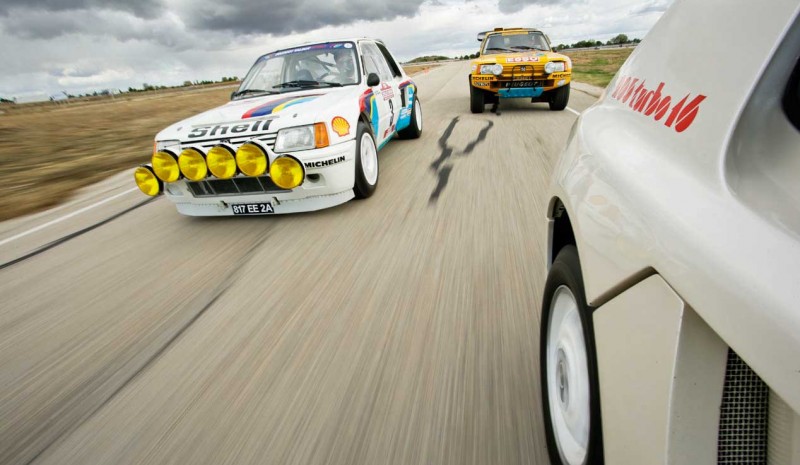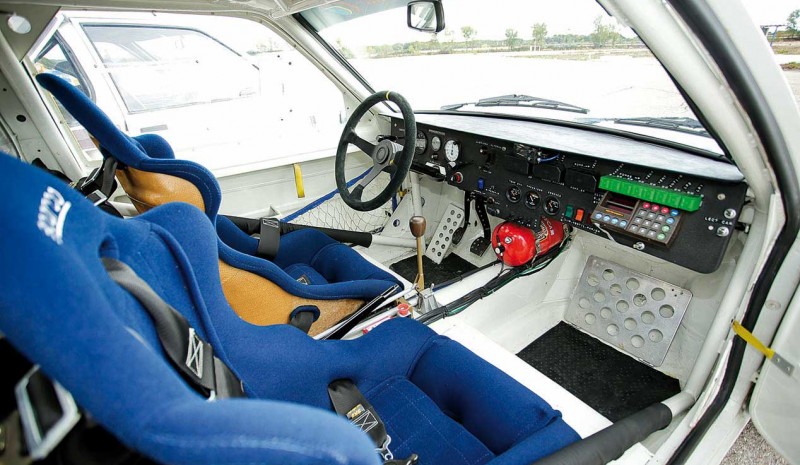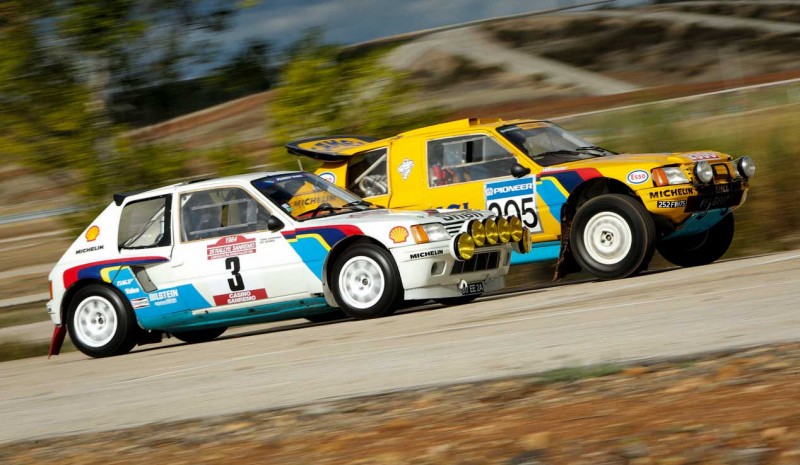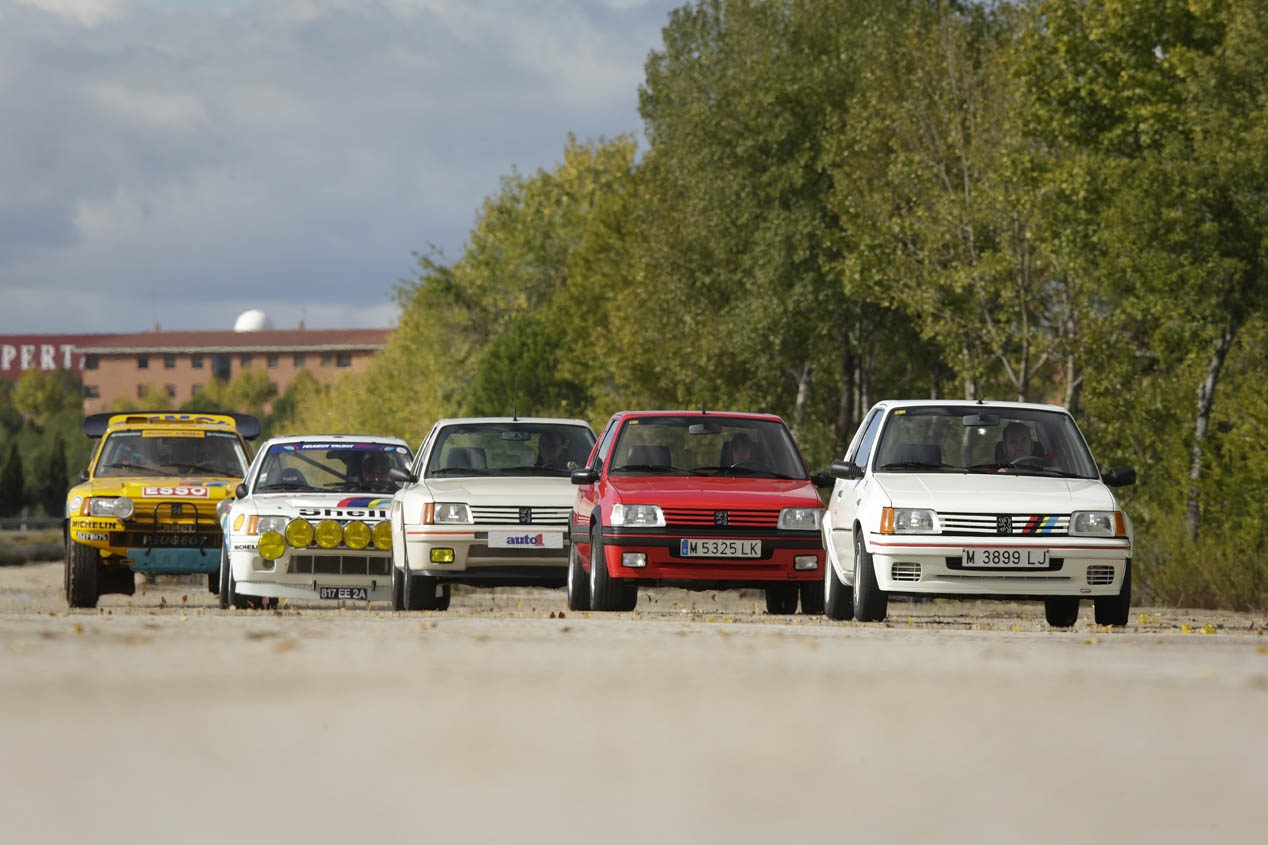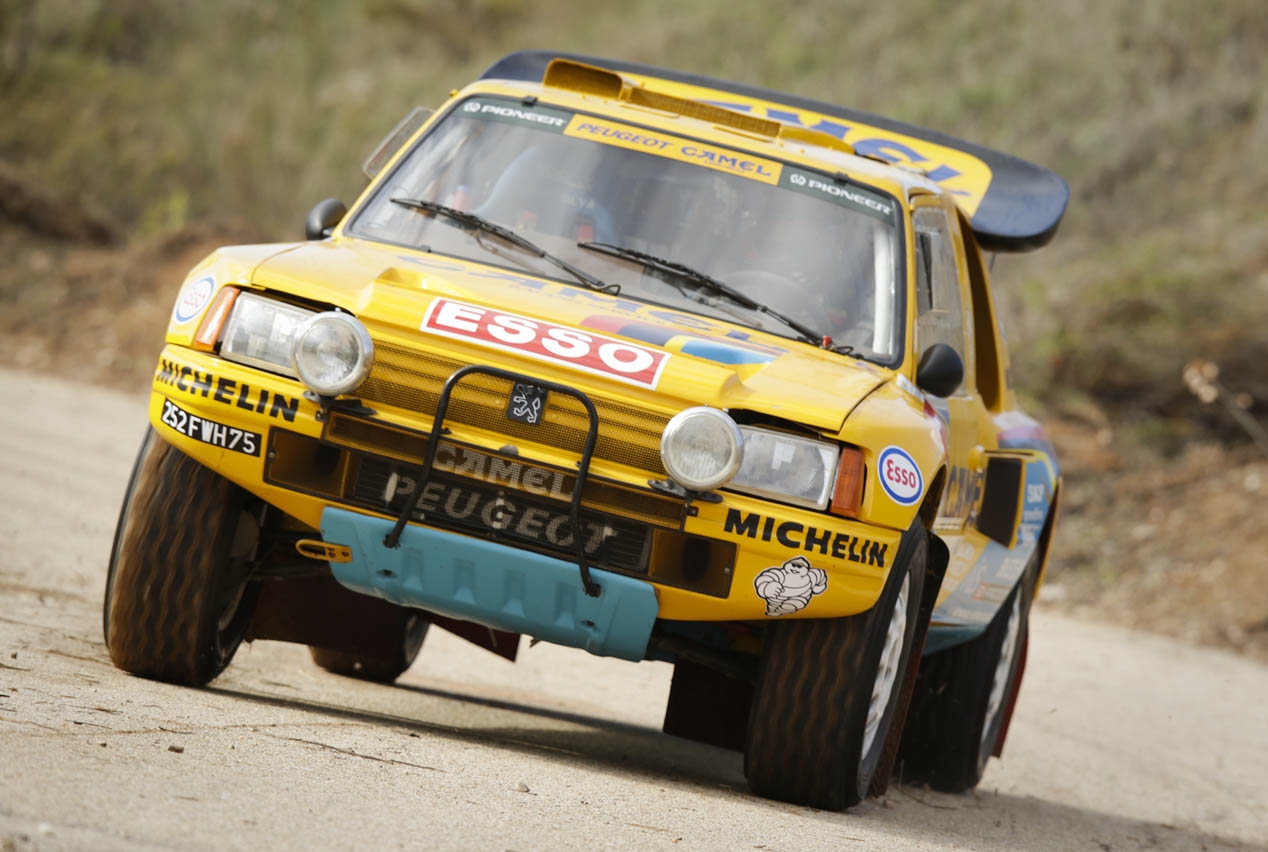Cars for remembrance: Peugeot 205 T16
The Peugeot 205 T16 were the best of his time, triumphing in the world of racing in the late Group B, a time when the rallies lived their best years.
The 80 They were marked by our protagonists. Seeing them back flow memories and images and excitement of an incomparable era: that of the B Group rally.
Many years have passed, and what we see is puzzling, how small are these cars! He Peugeot 205 T16 Series 20 Street does not seem much bigger than a Peugeot 205 GTI, only wider, while Group B (Evolution 1) asphalt, so compact and almost aerodynamic devices, it conceals its power. He Peugeot 205 T16 Grand Raid, however, height impresses by its size and high elongated and prominent spoiler. The cockpit of racing cars also impacts: reduced to a minimum, doors made with cigarette paper, plastic windows, roll bar made with a tiny diameter tubes dashboard. What today strikes in 1984 went unnoticed or was the norm. More than thirty years later, get behind the wheel of a Peugeot 205 Turbo 16 is a privilege, driving the whole Group B Street. The driving position is comfortable, rather high, and the atmosphere very Racing. An aluminum bottom bracket perfect to run the spike-heeled, the Turbo 16 registration on the steering wheel, the speedometer up to 260 km -Graduated / h- and cuentavueltas, with a marked red zone at 7,500 rpm, promise war.
Contact roar of the engine and the Peugeot 205 T16
Grave, throaty, powerful. He poor insulation sonorous It is a success. Standing still puts the willies. Clutch and change require energy and decision, although can not be described as hard, as it is the case of static address. Throw shooting is as easy as any utility. As expected, below 3,000 rpm seems lethargic, deflated. Disappointing? No, of course. We must have the effect turbo and a sharp distribution. Exceeded that regime awakening occurs. Turbo blows and … patadón! At 4,000 rpm the power arises, the torque is high and the powerful thrust. Rev up with joy and the acceleration is constant pace with a growing rumble and delicious cut before 6,000rpm respect for the mechanics. Still, the car has the strength and jerk expected from their 200 official CV, which they reach 6750 rpm. The Peugeot 205 Turbo 16 does not care that have straight or curved. Its frame assimilates well the power but who are behind the wheel has the task of managing it well. Acceleration out of bends makes the T16 open understeering path Gently, but with much traction. Surprising since both the central and limited slip differential as the front limited slip rear distributed torque and power to the rear wheels preponderance. In tight corners and understeer is also softer suspension, but still very comfortable with the feeling of not secured enough. All changes when the speed is used to support the front axle braking and using weight transfer to pass the apex of the curve. He firm brake pedal allows accurately metered braking so that the car becomes neutral and even crossing progressively without all the mechanics that is behind us do dwt, demonstrating an exceptional balance. Simply countersteer and T16 regains its line, whereas he should accelerate again and driven out of the curve … For drivers, go! The steering is very precise and excellent sensations of what the tires. In short, a race car for the street dressed, healthy behavior and potentially very high performance.
He Peugeot 205 T16 It was developed using traditional methods and applying simple solutions, but highly effective. The driving position is high enough to promote visibility. It struck by the huge wheel, but soon discovered the reason: no power steering and it is hard as a rock. The clutch, however, is smooth and progressive, and the engine responds well from below. With a first not too long relationship, change six captive speed for accuracy, the paths of the hard-tight switch trigger something, yes-and impressive speed. With some initial sluggishness due to the somewhat dirty spark plugs after a long period of inactivity, the engine rounded in a couple of accelerations … “
The four-cylinder has little verve below 2,500 rpm: But from there the turbo starts to blow hard and the horses arrive in droves. So we should be very attentive to cuentavueltas. No need to climb to 8,000, marches are depleted quickly, and it goes without saying that with a weight of 960 kg, the acceleration capacity is quite impressive. Fortunately, the car restrains well and with a quick heel tip we can count on retaining the motor.
Peugeot 205 Grand Raid
Paradoxically, the Peugeot 205 Grand Raid It turns out to be a much simpler and rested car. It has power steering, a battle 33 cm longer and longer travel suspensions. So get some reactions on dirt tracks and quite bumpy metered. It is developed from Evo 2 and the supercharged engine features a Garrett turbocharger instead of KKK, capable of yielding no less than 500 hp, although this version was limited power to 380 hp. As we saw, the engine was much sharper than in the Evo 1 and below 3000 rpm was practically inoperative, while in high seems to push with greater consistency and brutal. But in this version, the rear Manda real, but without stridency, making clear the effectiveness and balance of the frame. Although primarily was born to compete, the Turbo 16 shares genes of 205. His skin is unmistakable, headlights, rear lights, windshields and doors are those of any 205 and its silhouette, therefore its nature is unquestionable. And if your bowels are better, much better, his heart is pure Peugeot with the then-alloy engine XU8T new four-cylinder 1775 cm3. In addition, the T16 completes the range 205, the last of their evolutionary links to form a complete family, from the utilitarian to thoroughbred racing.
He Peugeot 205 T16 only he competed in the World Rally Championship for three seasons between 1984 and 1986, but left an indelible mark. A few months after start competing came the first victory: Ari Vatanen won the 1000 Lagos on his land, Finland. Marked the starting signal a fantastic epic
in the world Cup. Peugeot won the titles of pilots and marks two consecutive years in 1985 Timo Salonen and 1986 Juha Kankkunen. Vatanen did not reach the championship, but swept the wheel of 205. He won three of the five rallies played in 1984, but led all. Off the road in Corsica and a breakdown in Greece Truncated streak. In 1985, after winning in Monte Carlo and Sweden, the Finnish suffered very serious accident of Rally Argentina, and with 205 Evolution 2, which kept him retired from competition two years and, indirectly, contributed to the tragic end of the B Group. Ari returned in 1987 when Peugeot 205 was recycled to the Paris-Dakar. And of course he won again. He Peugeot 205 T16 Grand Raid Africa dominated in two consecutive years, the second thanks to Juha Kankkunen. In 1989 he moved his shell by the 405 Turbo 16. Basically the same wolf with different skin, and Ari Vatanen won again two consecutive years. He also triumphed in the no less famous rise to Pikes Peak 1988 can appreciate the extraordinary short Jean Louis Mourey ‘Climb Danc’. The images make it clear that Vatanen, and by extension the drivers of those cars were real superheroes.
Conquering the World Rally Championship
Beyond his achievements, the context in which Peugeot imposed his rule gives more importance to these exploits. Excited by the experience Talbot Sunbeam Lotus and spurred by a serious crisis, Peugeot decided to embark on the conquest of World Rally Championship, ready to succeed or yes. And he did it with a daring project: the first rally car mid-engine and four-wheel drive.
Coachbuilder Heuliez while manufactured the chassis assembly is done by hand in the factory Peugeot-Talbot in Boulogne. The racing department of Peugeot Talbot Sport created in 1981 and captained by Jean Todt (team leader), Jean-Pierre Boudy (Motor) and André de Cortanze (Chassis) set out to fight no less than Audi and Quattro and Lancia with 037.
Since entering competition, Peugeot 205 T16 dominoes and in its first full year won the world title, ended the hegemony of Audi Quattro and even he thrashed famous Audi S1, you only got to win a race. All Group B which were then followed his mechanical approach: Ford
RS 200, Lancia Delta S4 Y Austin Metro 6R4. And all were defeated. Its first version appeared in the Tour de Corse 1984, and officially available 350 hp. The Evolution 2 also had its baptism in the corsa sport test the following year, 1985. Its engine and developing 480 hp. But this development was almost a mutation,
therefore the considerable increase in power as the aesthetic transformation suffered by the car, packed with aerodynamic devices. certainly
1985 Group B cars transgressed the bounds of reason although decision of the FIA to ban these super machines, It was the easy route and marked the end of a very powerful and screaming fast cars but deficient in safety.
You may also like
Ford Escort RS Cosworth
Mercedes 300SL
Renault 8 TS coupe prototype
The sanctuary of the forgotten cars (photos and video)
Seat 1200 Sport Bocanegra

